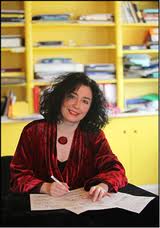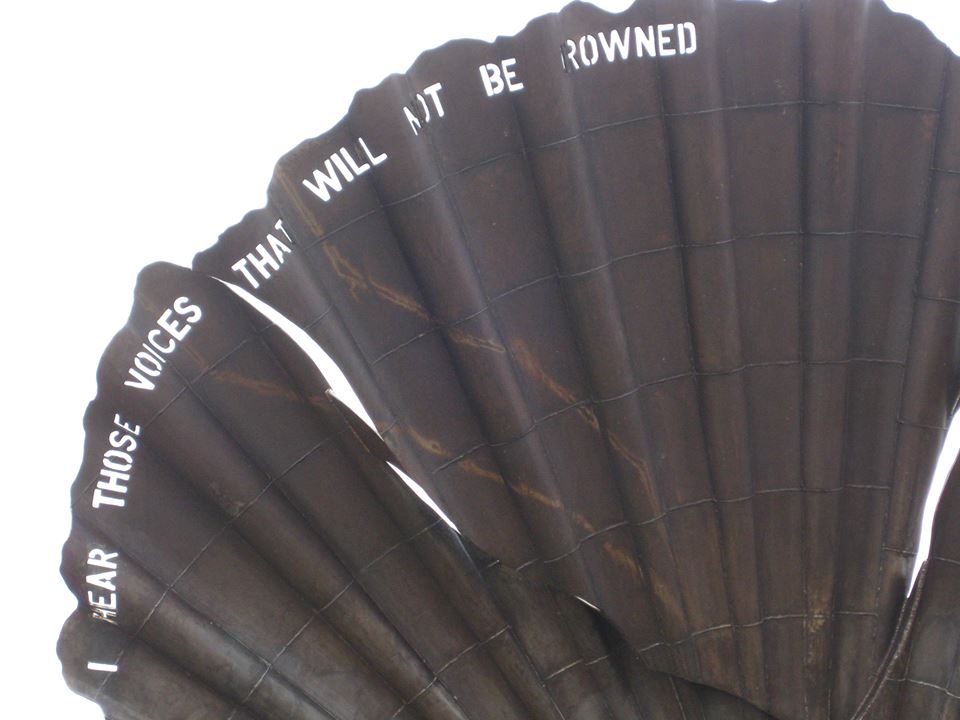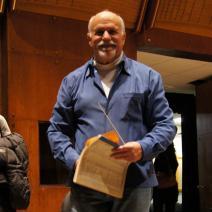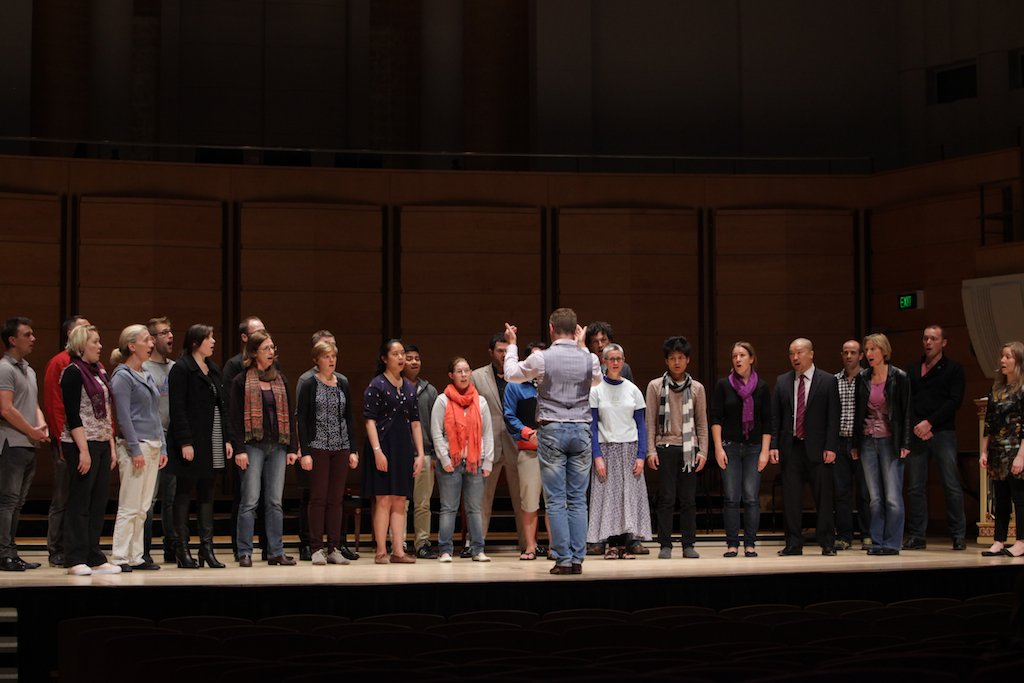The colours of the string quartet – Elena Kats-Chernin talks about ‘Blue Silence’

Elena Kats-Chernin says she has been told she can write no more works for String Quartet.
She displays a mischievous pleasure at my alarm. The Sydney composer has recently released a recorded collection of her ‘complete’ works for string quartet, entitled Blue Silence. ‘Complete’ to date, and therefore the end of a chapter. “But it’s only the end of one chapter, and not one that can’t be followed by another chapter of fresh new works for string quartet” she explains reassuringly.
Blue Silence, is an anthology of 28 cameos for string quartet, dating from the early 1990s and recorded as a 2 CD set on the Vexations 840 label.
Kats-Chernin doesn’t play a stringed instrument herself, but is very partial to their sound, especially their collective sound. “I love the sound of horse hair on the strings and the warm timbre of the wood. There is little that is metallic or man-made about a stringed instrument…and you can get so many colours from playing in different ways. The ranges balance each other and each instrument has its own voice, even though there two violins.” As a single entity, the string quartet is like one voice with a very large range; yet playing together it can generate succulent harmony or skeletal minimalism. It is this versatility along with the sensitivity and skill with which the Acacia Quartet perform that prompted the composer to invite them to record all her works for string quartet.
Kats-Chernin describes the tracks on Blue Silence as a ‘kaleidoscope’ of moods and music, with many that are familiar, like Eliza Aria and Russian Rag, alongside others that are not so well known. Some are as a brief as a spritz of fresh air, and others slightly longer, with The Road to Harvest being the longest track at just under 4 1/2 minutes. Only one of these, Kwong Song (2006) was written specifically for string quartet. The remaining 27 are re-inventions of works composed for genres as diverse as theatre (Drinking Song 1991-92 and Grotesk), cello and piano duo (Blue Silence, 2006) and clarinet quartet (Pink Breasted Robin, 2006). Kats-Chernin observes that some were written in a mood of deliberate composition; others were spun in brief moments of creative spare time.
As well as re-inventions of her own works, Blue Silence contains Kats-Chernin’s inimitable twists on the music of an older master – J S Bach’s Notebook of Anna Magdalena Bach from which she has selected 6 of the pieces – ” in no particular order” – seminal to the piano and to Baroque repertoire. Using devices of Baroque writing she has breathed into them a different chracter, creating levity, whimsy, wit and satire, living up to the description of her style in Oxford Music: ” Kats-Chernin works from an intuitive perspective…. Important aspects of her works are concerned with an exploration of timbres and textures and a sense of the ridiculous.”
Elena Kats-Chernin first heard the Acacia Quartet perform her music at the Sydney Conservatorium early in 2011. “What struck me most about them” she says, “was their respect – their respect for the music and for each other.” She has been impressed by the focus with which they have met the challenge of learning and performing superbly, the 28 pieces in a time-frame of not much more than a year. The opportunities of the recording studio presenting a double edged knife, when perfection is the goal. Violinists Lisa Stewart and Myee Clohessy, violist Stefan Duwe and cellist Anna Martin-Scrase formed in the ensemble in 2010 following successful chamber and orchestral careers both in Australia and overseas.
Kats-Chernin is quick to point out that her works for string quartet are not string quartets constructed in the traditional sense of their architecture. Instead, they can be played as single movements or in combination, allowing a flexibility that may appeal to both musicians and listeners. We broached the topic of the limited opportunities for hearing new music performed beyond a premiere outing. “It is difficult to get orchestras to perform a work even once, let alone for second or a third time.” She says, self-effacingly, that she is fortunate to have had works performed beyond a second hearing, finding it easier to disseminate her musical ideas and messages by writing for smaller forces.
“It’s nothing to do with age, or reputation or people getting used to the sound of my music – I was having works performed that I’d written in my twenties. You don’t need to have been around for a long time to be taken seriously.” Elena Kats-Chernin was born in Tashkent in 1957. Of Uzbek origin she moved to Australia with her family in 1975. She had already entered the Gnesin Academy of Music in Moscow aged 14 and studied there for three years. Continuing her music studies in Australia, she graduated from the Sydney Conservatorium in 1979. She moved to Hanover, where she studied with Helmut Lachenmann at the Hochschule für Musik and began to write music for ballets and soundtracks for theatre productions. In the mid 1980s she was commissioned by the Sydney Symphony to write symphonic music and she returned to Sydney in the mid 90’s. Her music has won numerous awards and has been heard on radio and television, in the concert hall and on the stage.
Transcribing her works for a variety of genres and for smaller instrumental forces, places them within reach of more musicians and wider audiences. Add to that, the advances in digital music and the option of downloading entire albums or selected tracks and immediately the essence of accessing music has been revolutionised. Kats Chernin believes the obstacles inherent in having new work performed live, can be circumvented. Though she herself confesses to being old fashioned. ” I like to hold a book or a CD and read it and feel it” she admits, amusingly citing the indubitable proof that she has resisted getting a smart phone, staying with her regular mobile phone as a concession to necessity.
Dance forms and colours abound in the tracks on Blue Silence. Five of the six excerpts from Bach are dances; the tango, waltz and Charleston complete the dance card. And there is colour! Blue, pink, silver, burnished silver and black. Is she a synaesthete? ” No” she acknowledges. “I don’t see colour in the way that Messiaen and Scriabin have described, but I love colour! My life and my music are definitely influenced by colour. Each room in my house is a different colour and colour can create a mood!’
Elena Kats-Chernin is back in Sydney and writing – and she’s not ruling out more works for string quartet!
Elena-Kats Chernin was interviewed by Shamistha de Soysa for SoundsLikeSydney©
Read our review of ‘Fast Blue Village’ the prequel to ‘Blue Silence’ here and our interview with Lyle Chan, executive and recording producer for the project here.
Blue Silence is available for digital download or as a 2 CD set at http://vexations840.com/bluesilence/ where you can also download the booklet free and listen to tracks from the recording.







